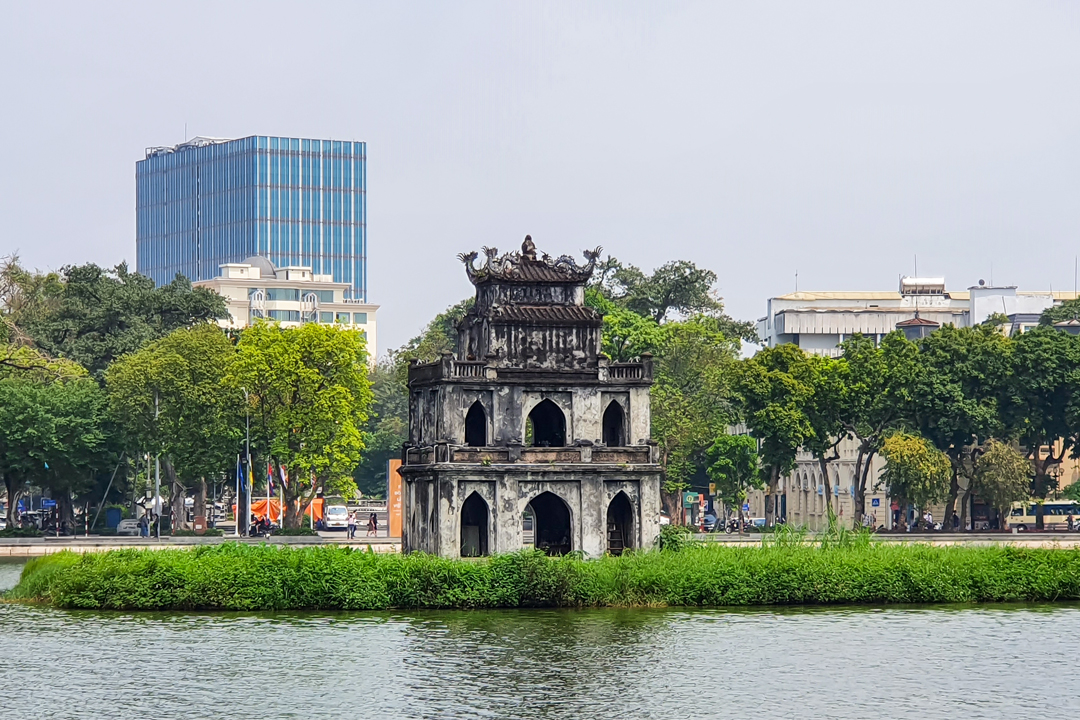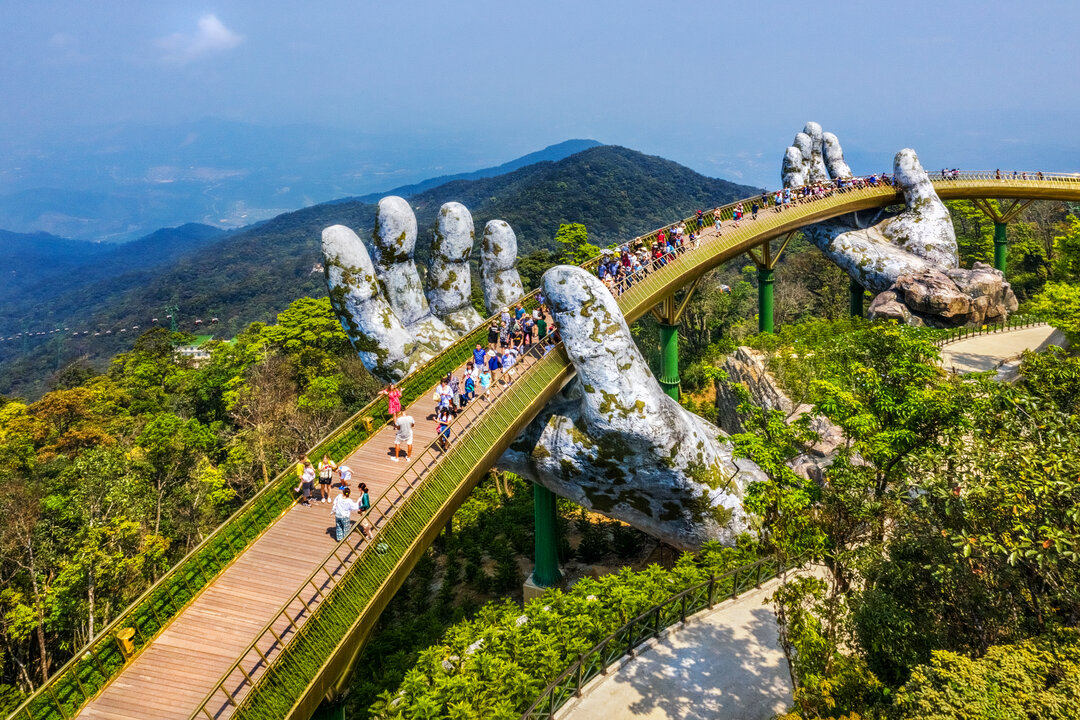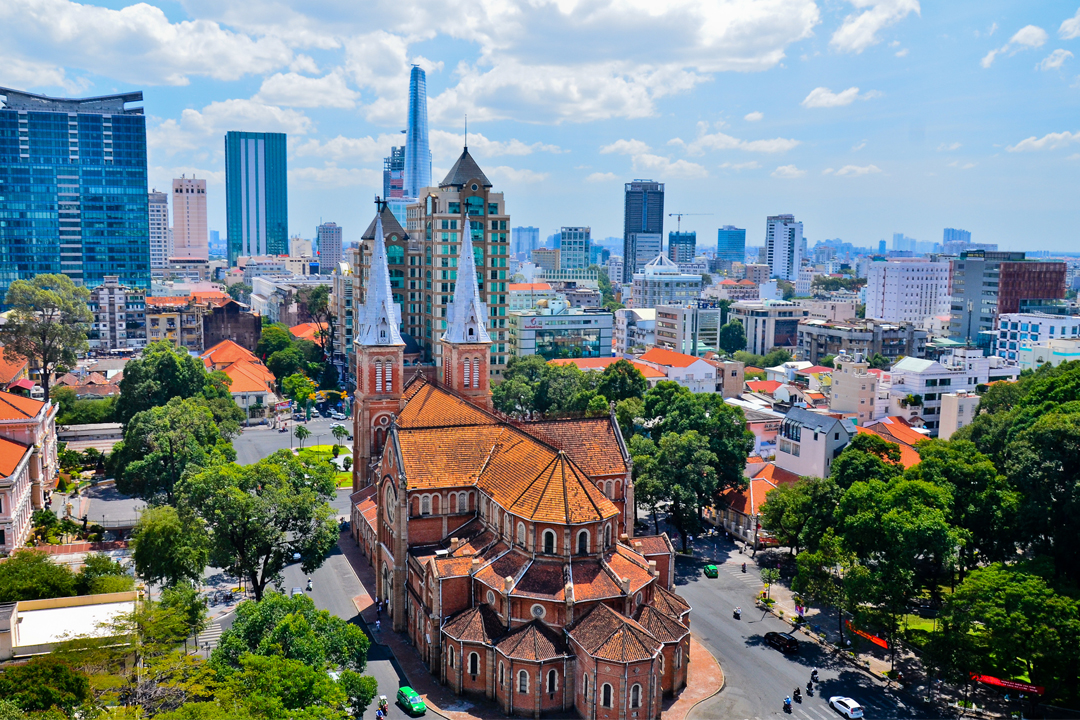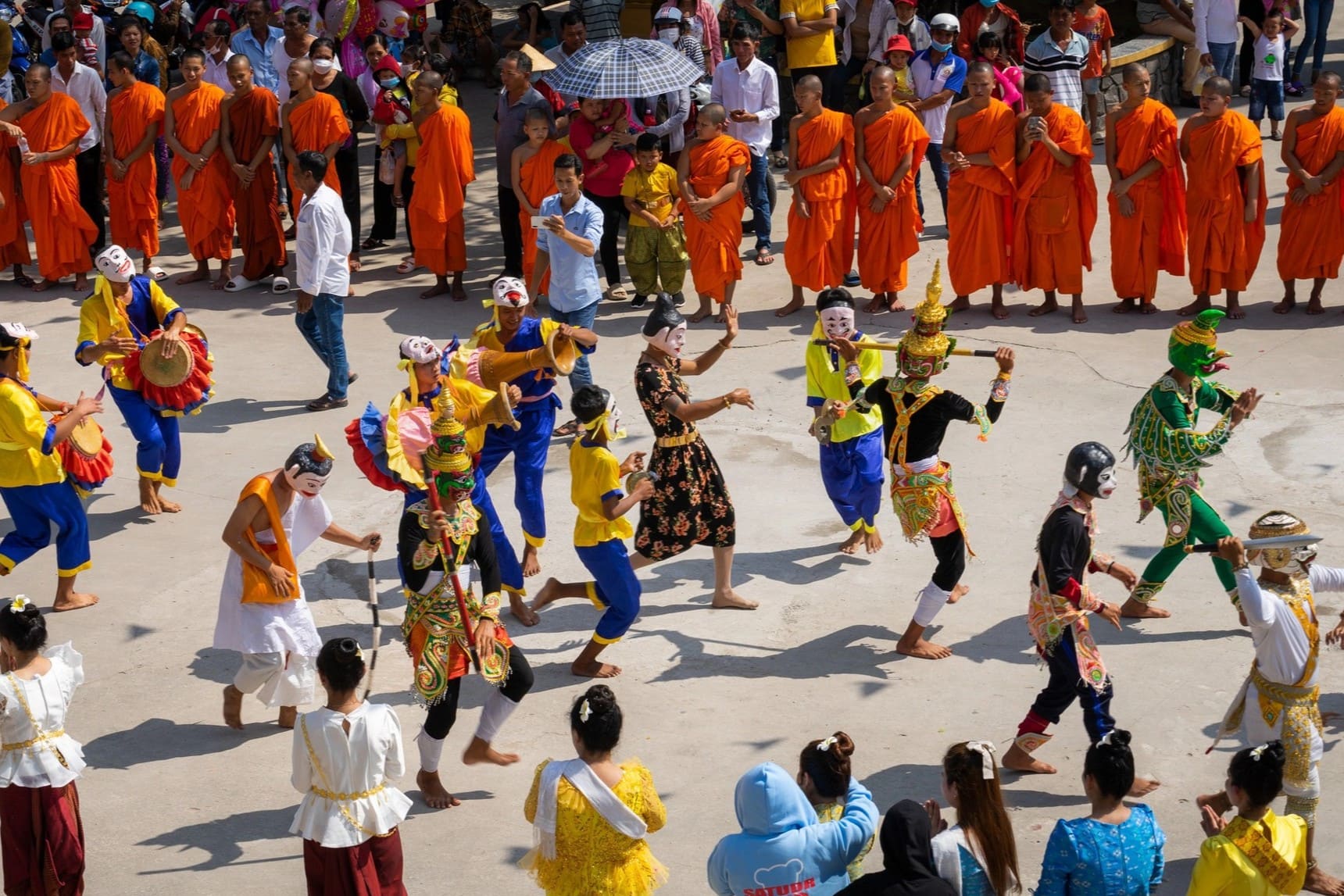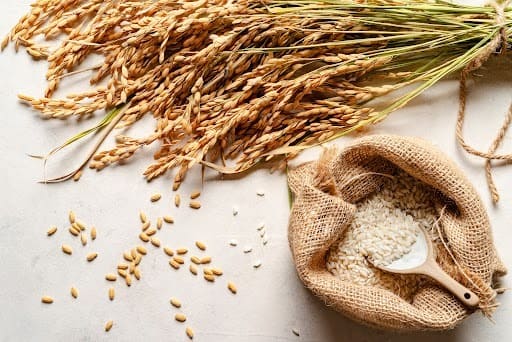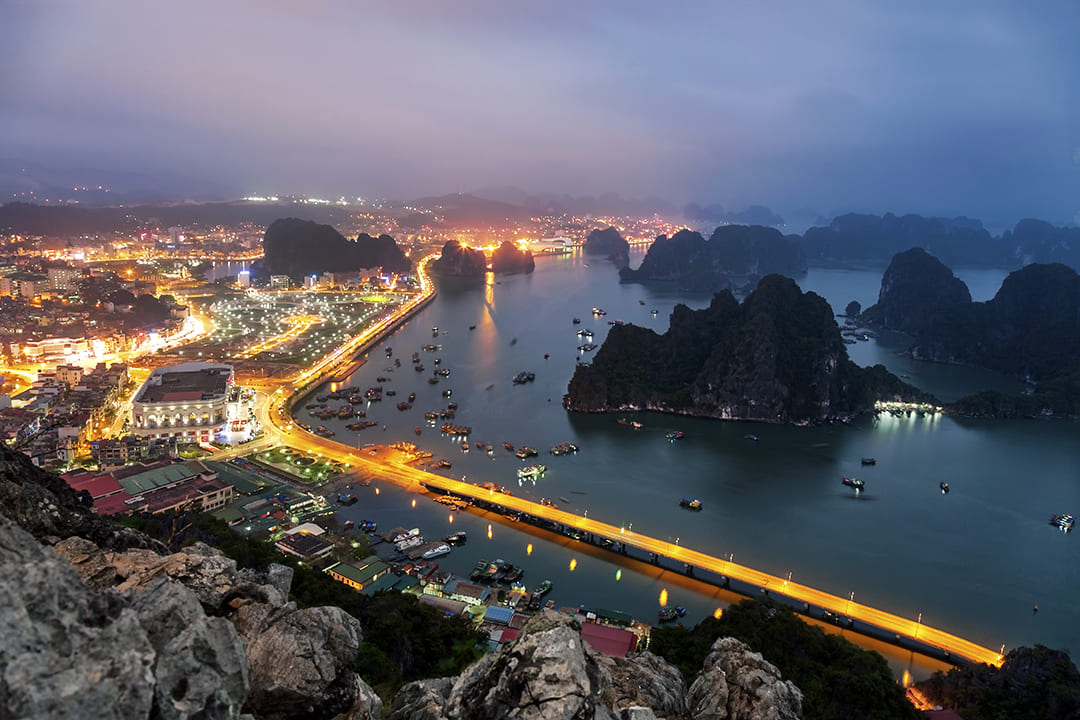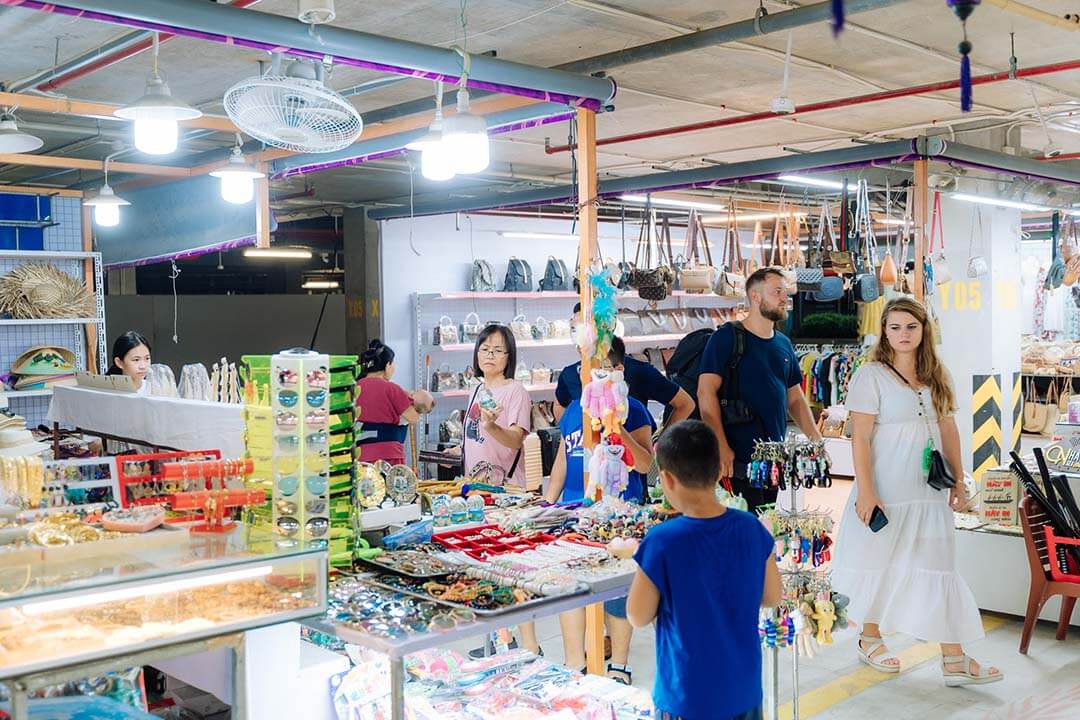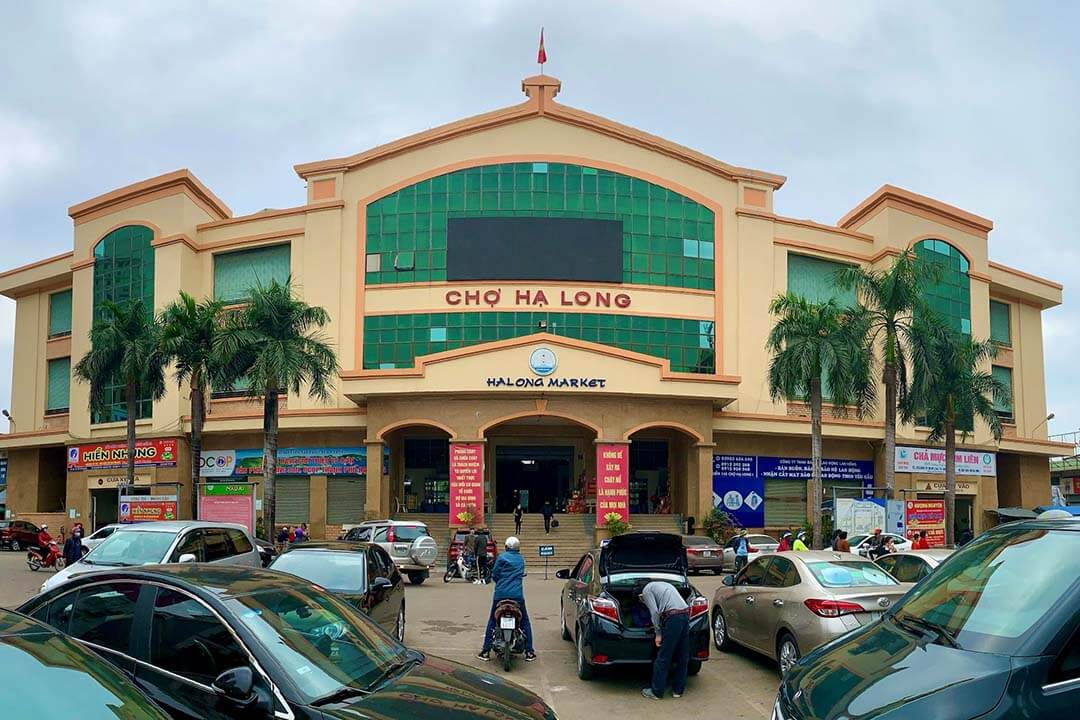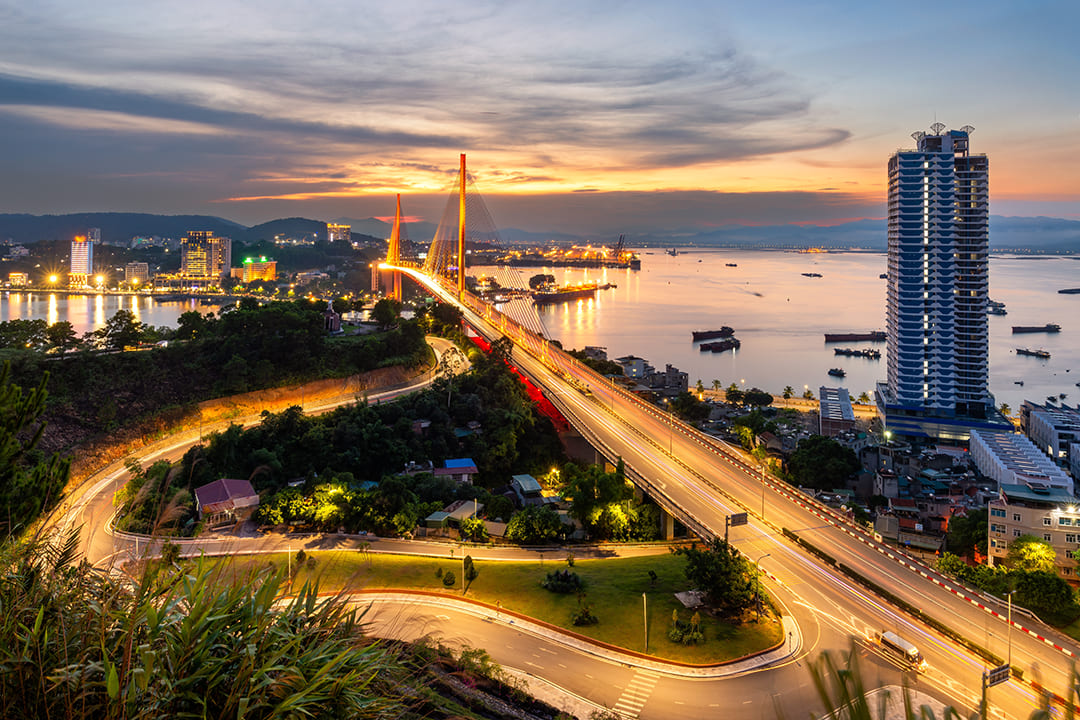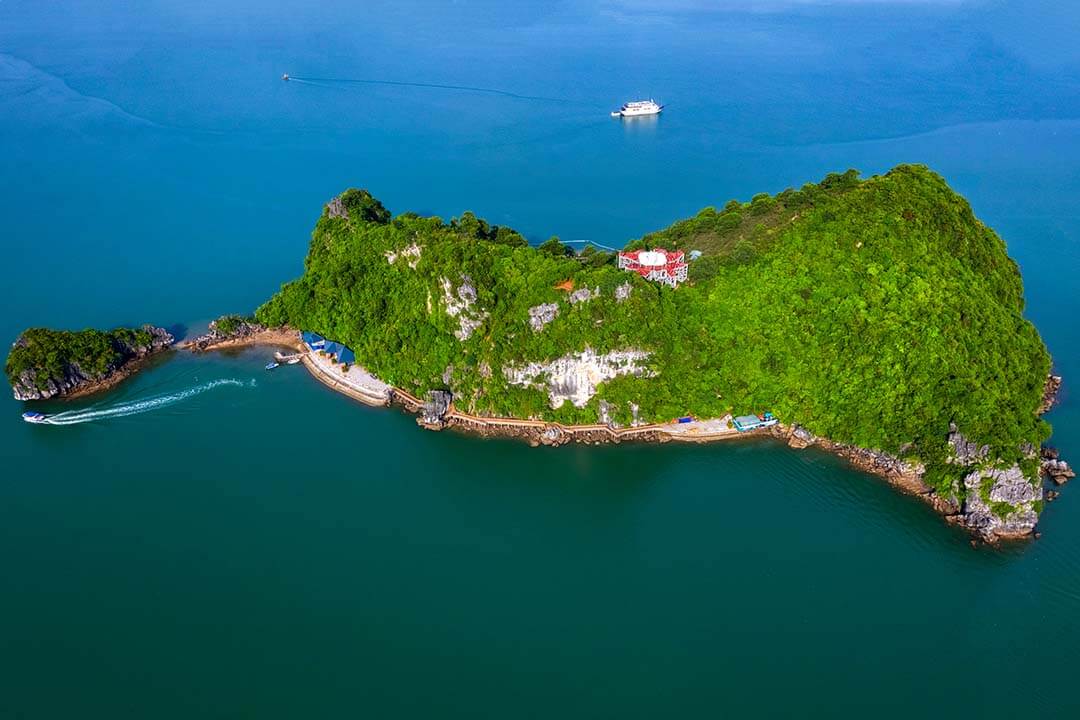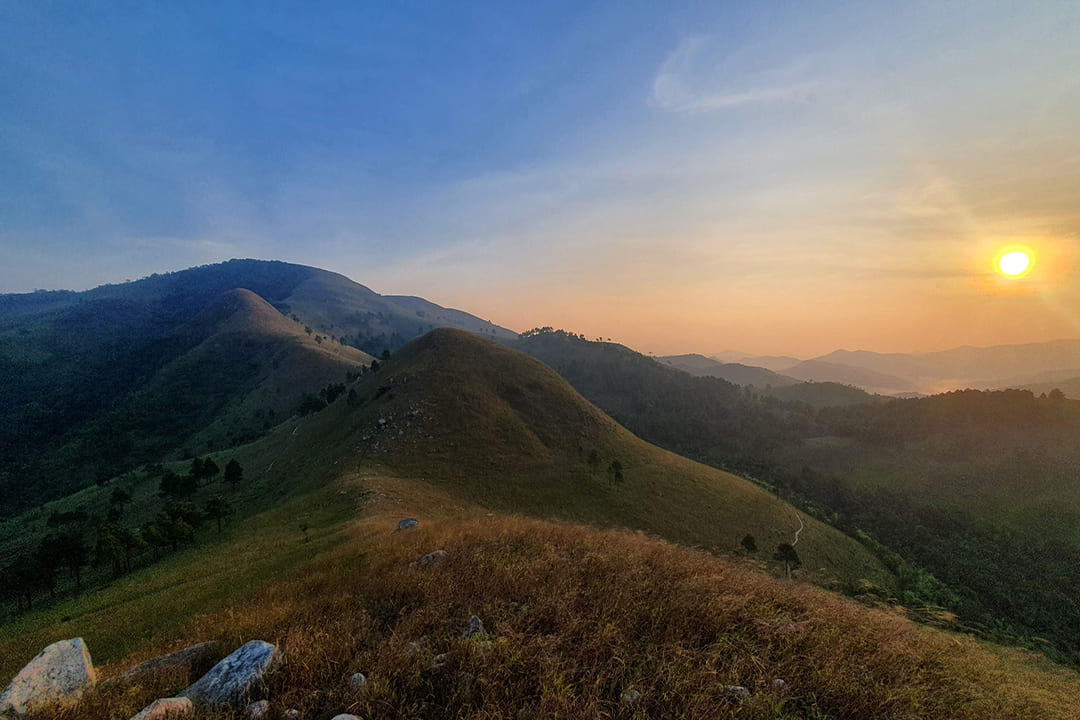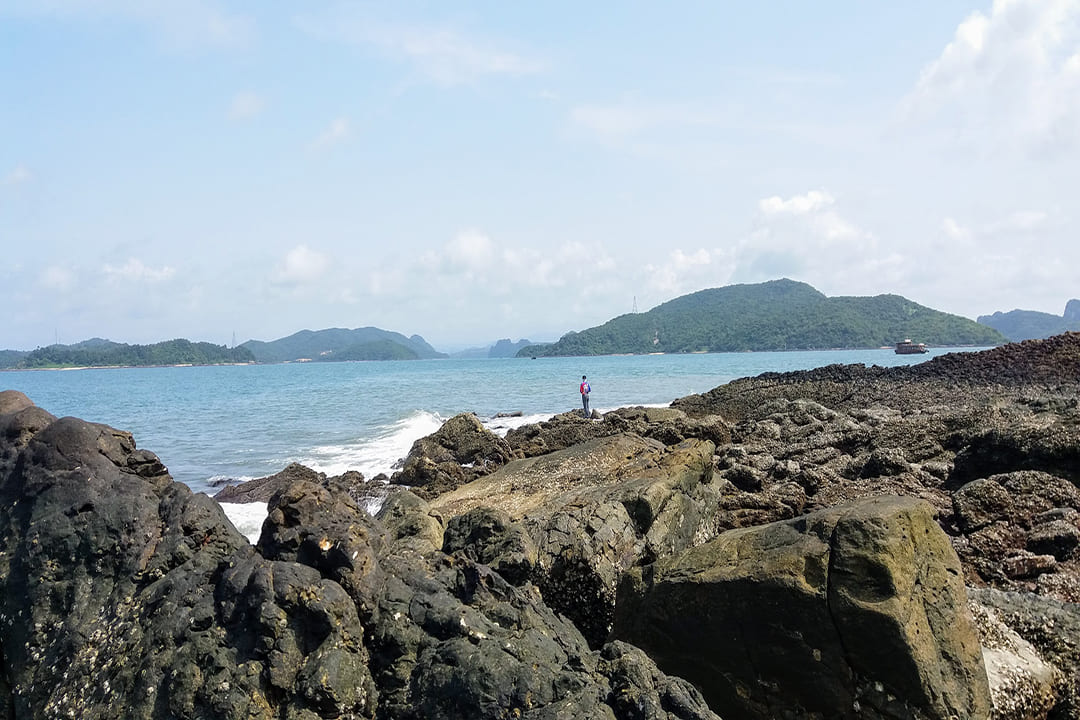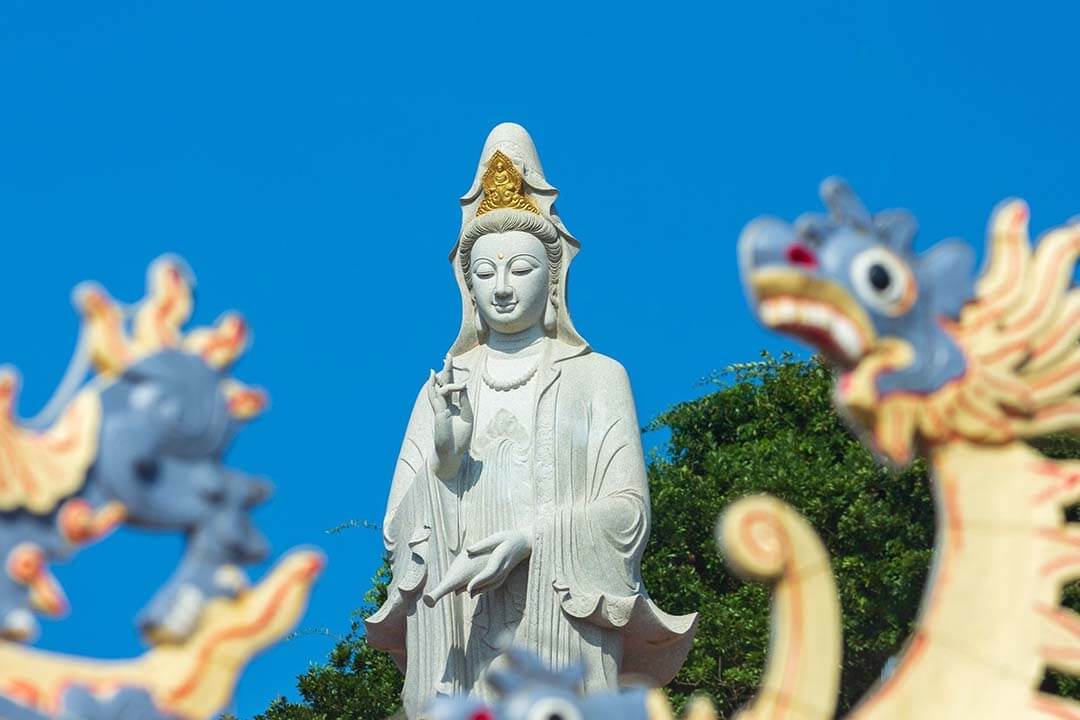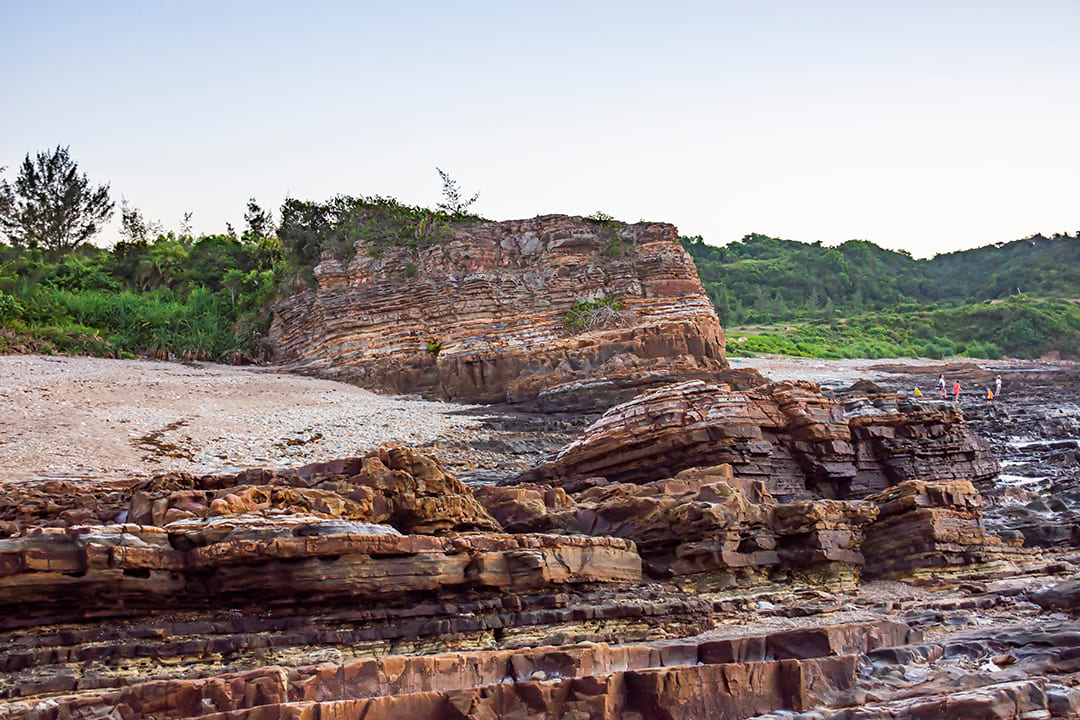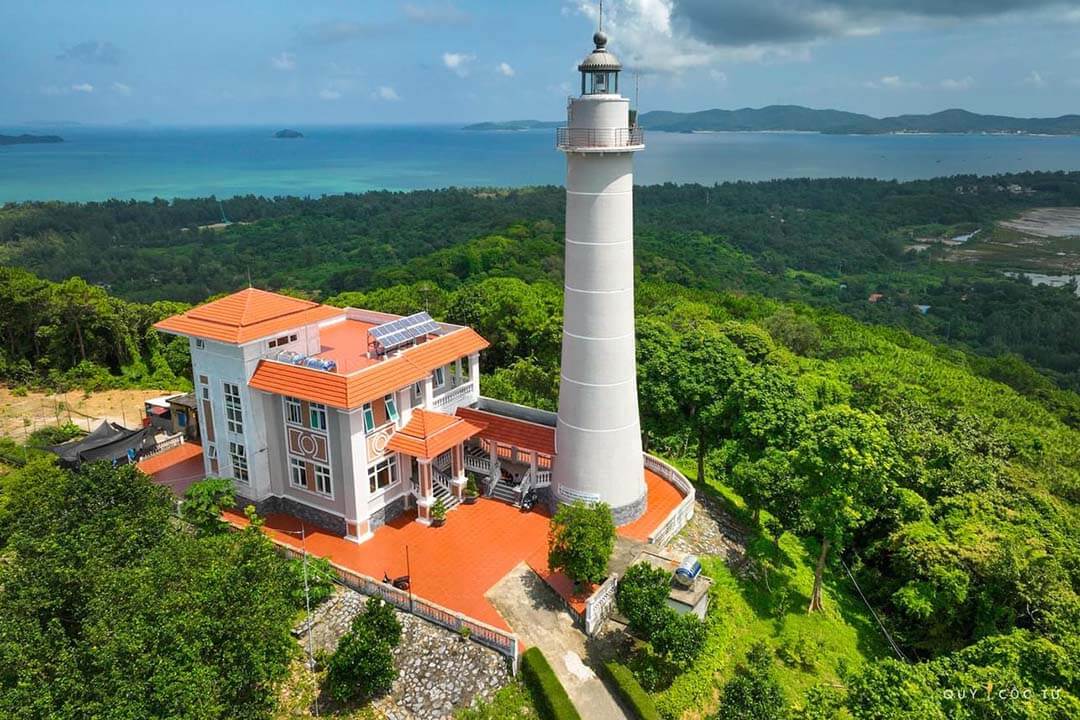Jan - 23 - 2025
Hoa Yen Pagoda, nestled in the scenic landscapes of Quang Ninh Province, represents a significant Buddhist sanctuary and the central site of the Yen Tu Pagoda system. Located near iconic landmarks such as Bai Dinh Pagoda of Ninh Binh, it highlights the deep cultural and spiritual connections that define this region. Its serene setting and historical charm make it a prominent destination for those seeking spiritual tourism in Vietnam.
This ancient pagoda showcases the religious and cultural heritage of Quang Ninh, reflecting the beliefs and traditions of the local community. It holds a vital place within the Yen Tu landscape, offering you an opportunity to connect with Vietnam's rich spiritual history. As a symbol of devotion and tranquility, Hoa Yen Pagoda has become a hub for pilgrims and enthusiasts of Vietnamese culture alike.
This comprehensive guide of GTrip provides insights into Hoa Yen Pagoda’s fascinating history, unique architectural features, and engaging activities. We also offer practical travel tips to help you plan an unforgettable journey to one of Vietnam’s most revered Buddhist sites. Let’s dive into the beauty of Hoa Yen Pagoda with us now.
History of Hoa Yen Pagoda
Hoa Yen Pagoda originated during the Ly Dynasty, marking the beginning of its profound historical and spiritual journey. Established as a place of worship and meditation, it played a pivotal role in the development of Buddhism in the region. During its early years, the pagoda stood as a testament to the spread of Buddhist teachings, attracting monks and scholars seeking enlightenment. Throughout its timeline, Hoa Yen Pagoda has undergone significant changes to preserve its structure and spiritual significance. Each restoration effort has sought to maintain the traditional essence of the pagoda while adapting to the needs of its time.
The pagoda’s history is intertwined with major events that have shaped its identity. During the Tran Dynasty, it became an influential center for Buddhist thought, hosting notable monks and playing a role in the cultural renaissance of the era. The association with King Tran Nhan Tong, who founded the Truc Lam Zen School of Buddhism, underscores its importance as a spiritual beacon. The teachings and practices established here influenced the broader Buddhist tradition in Vietnam. Hoa Yen Pagoda’s connection to Yen Tu Mountain further cemented its role as a cultural and spiritual landmark. Over the years, it has withstood the test of time, including challenges posed by natural disasters and historical conflicts. As a cornerstone of the Yen Tu complex, the pagoda continues to inspire generations with its storied past.
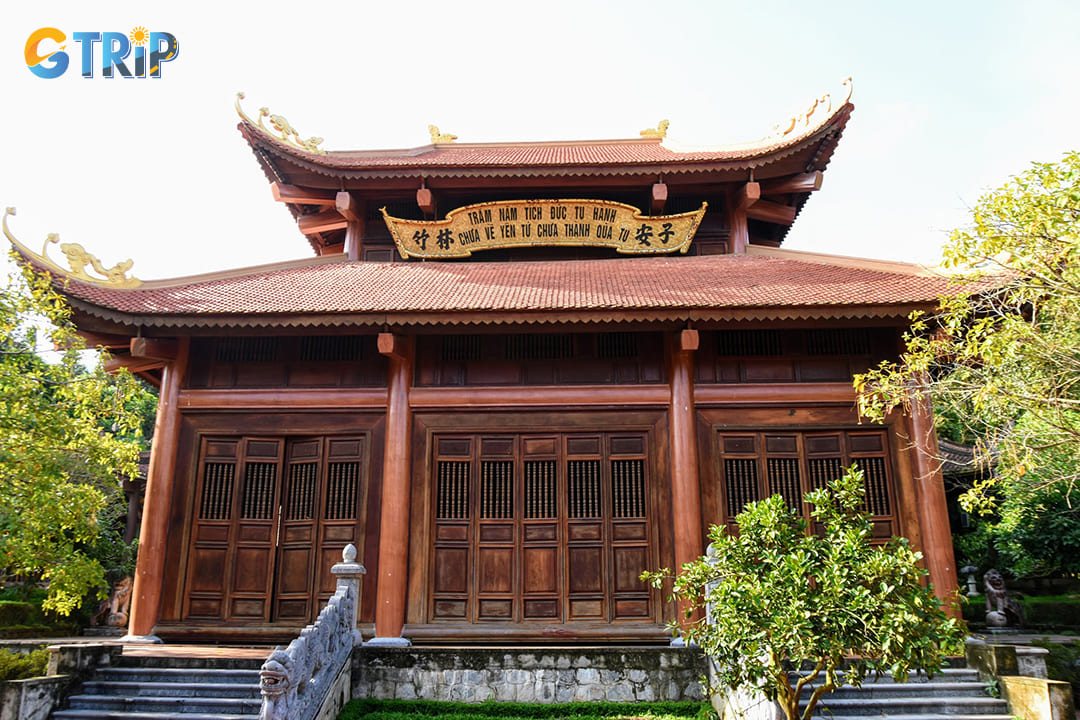
Hoa Yen Pagoda originated during the Ly Dynasty, marking the beginning of its profound historical and spiritual journey
Hoa Yen Pagoda remains a cornerstone of spiritual life in Vietnam, drawing countless pilgrims seeking peace and enlightenment. As a key pilgrimage site, it is particularly vibrant during significant Buddhist festivals like Vesak and the Lunar New Year. They are the occasion where worshippers gather to participate in prayers and ceremonies. The pagoda’s tranquil setting, surrounded by lush greenery and mountain vistas, enhances its role as a sanctuary for meditation and reflection.
The practices and rituals observed at Hoa Yen Pagoda provide a profound connection to Vietnam’s Buddhist heritage. The teachings imparted here resonate deeply with those who visit, offering insights into the spiritual traditions that have shaped the region for centuries. The rich history of Hoa Yen Pagoda, marked by its enduring significance and spiritual heritage, sets the foundation for understanding its unique architectural structure. Let's explore the unique structure of Hoa Yen Pagoda in the next section with us.
Unique structure of Hoa Yen Pagoda
The structure of Hoa Yen Pagoda is characterized by its traditional "Cong" shape, which reflects the harmony and balance central to Vietnamese Buddhist design. The layout includes a series of interconnected buildings and courtyards, forming a cohesive space for worship and meditation. The main hall, or "Dai Hung Bao Dien", forms the centerpiece of the pagoda, housing altars and relics of profound spiritual significance. Inside, you can find intricately carved wooden altars adorned with offerings and statues of Buddha.
Notable features of the pagoda include the use of wooden carvings, symbolic statues, and spiritual motifs that narrate Buddhist teachings. The design seamlessly integrates the natural surroundings, creating a serene atmosphere that enhances the spiritual experience for worshippers. Hoa Yen Pagoda incorporates traditional materials such as wood, stone, and clay tiles in its construction, showcasing the craftsmanship of ancient Vietnamese artisans. The architectural style is rooted in Vietnamese Buddhist traditions, with curved roofs, decorative eaves, and delicate carvings that symbolize elements of nature and spirituality.
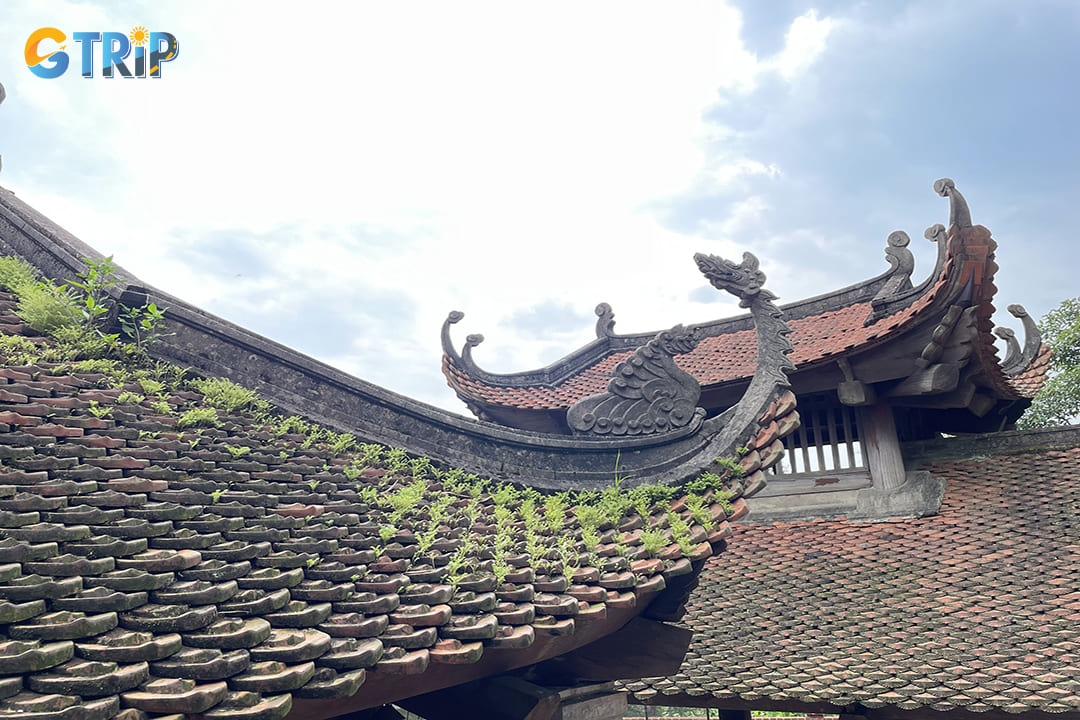
Notable features of the pagoda include the use of wooden carvings
The pagoda's timeless design emphasizes simplicity and functionality while representing profound spiritual values. Each element, from the sturdy stone foundations to the intricately designed wooden beams, reflects the enduring connection between Vietnamese culture and Buddhism. The iconography within Hoa Yen Pagoda is rich with symbolic representations of key Buddhist teachings. Statues of important Buddhist figures, including Sakyamuni Buddha and bodhisattvas, are carefully positioned to guide worshippers in their spiritual journey. These statues, crafted with attention to detail, embody the principles of compassion, wisdom, and enlightenment. Additionally, the pagoda features symbolic motifs such as lotus flowers, which represent purity and spiritual awakening.
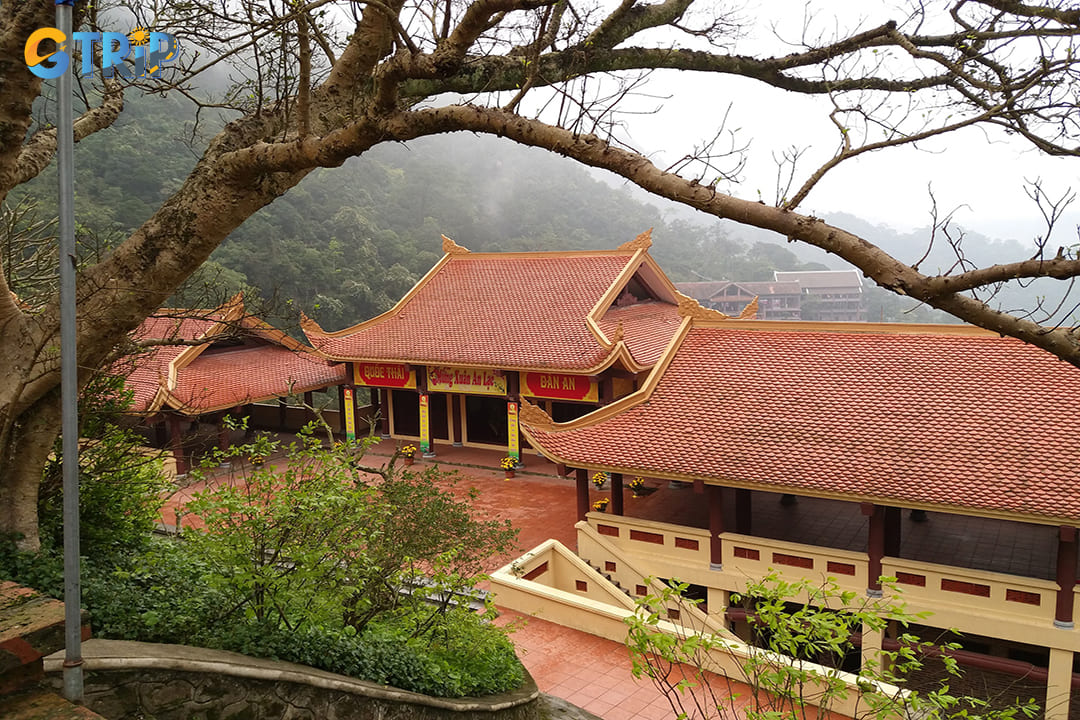
The pagoda's timeless design emphasizes simplicity and functionality while representing profound spiritual values
Hoa Yen Pagoda main area
The main area of Hoa Yen Pagoda includes the central sanctuary, which serves as the heart of spiritual activities. This sanctuary is dedicated to worship and meditation, offering a serene space for prayers and rituals. The design of the central structure reflects traditional Vietnamese Buddhist architecture, with harmonious proportions and intricate detailing. Inside the sanctuary, you can find altars adorned with offerings, candles, and incense. The atmosphere is imbued with a sense of reverence, inviting worshippers to connect deeply with their spiritual beliefs.
The central hall hosts significant relics and artifacts that highlight the historical and religious importance of Hoa Yen Pagoda. Wooden carvings depicting scenes from Buddhist scriptures and statues of deities create a visually captivating environment. The interplay of light and shadow within the hall enhances its sacred ambiance, providing an unforgettable experience for those who enter.
The main area of the pagoda is seamlessly integrated with its natural surroundings. The open courtyards and pathways lined with lush greenery allow worshippers to feel a deep connection with nature while engaging in spiritual practices. This harmonious blend of architecture and environment embodies the core principles of Vietnamese Buddhism.
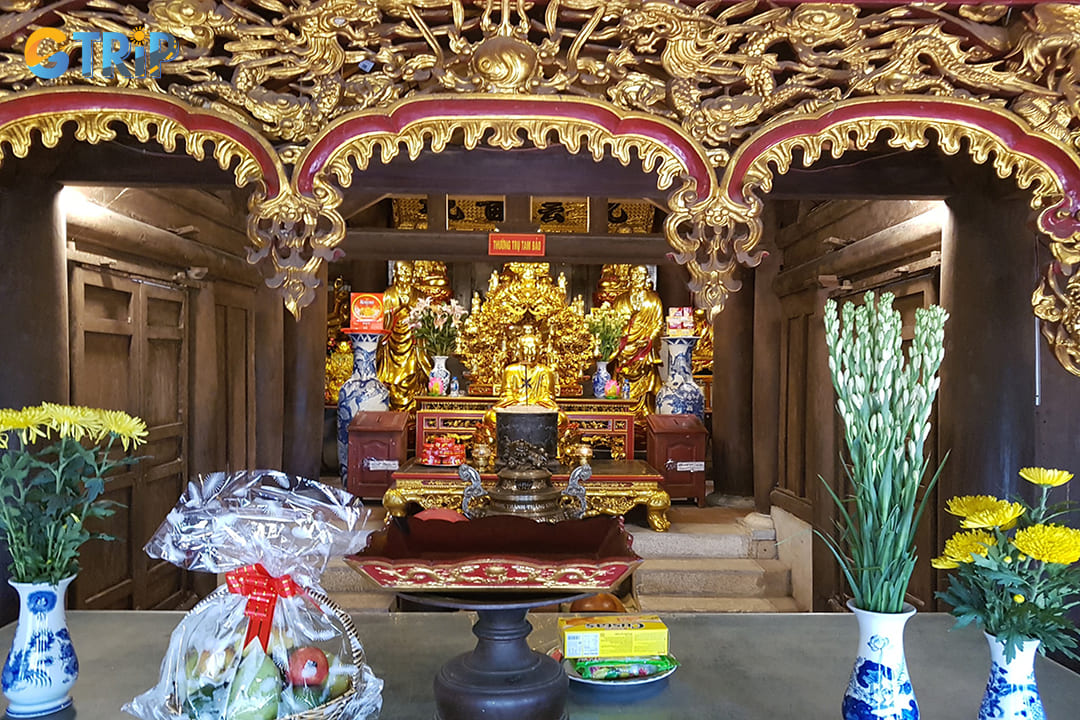
The main area of Hoa Yen Pagoda includes the central sanctuary, which serves as the heart of spiritual activities
Ancestral church
The Ancestral Church, also known as the "To Mieu", is an integral part of Hoa Yen Pagoda, honoring the lineage of Buddhist masters and significant figures. This structure is dedicated to the veneration of ancestors who have contributed to the development of Buddhism in the region. The Ancestral Church plays a crucial role in connecting the present worshippers with the past, offering a space for reflection on the teachings and lives of those who have shaped the Buddhist community. Within the Ancestral Church, you can find monuments and altars dedicated to the revered ancestors. The design of this space reflects traditional Vietnamese cultural values, emphasizing respect and gratitude for those who paved the way for spiritual growth and enlightenment.
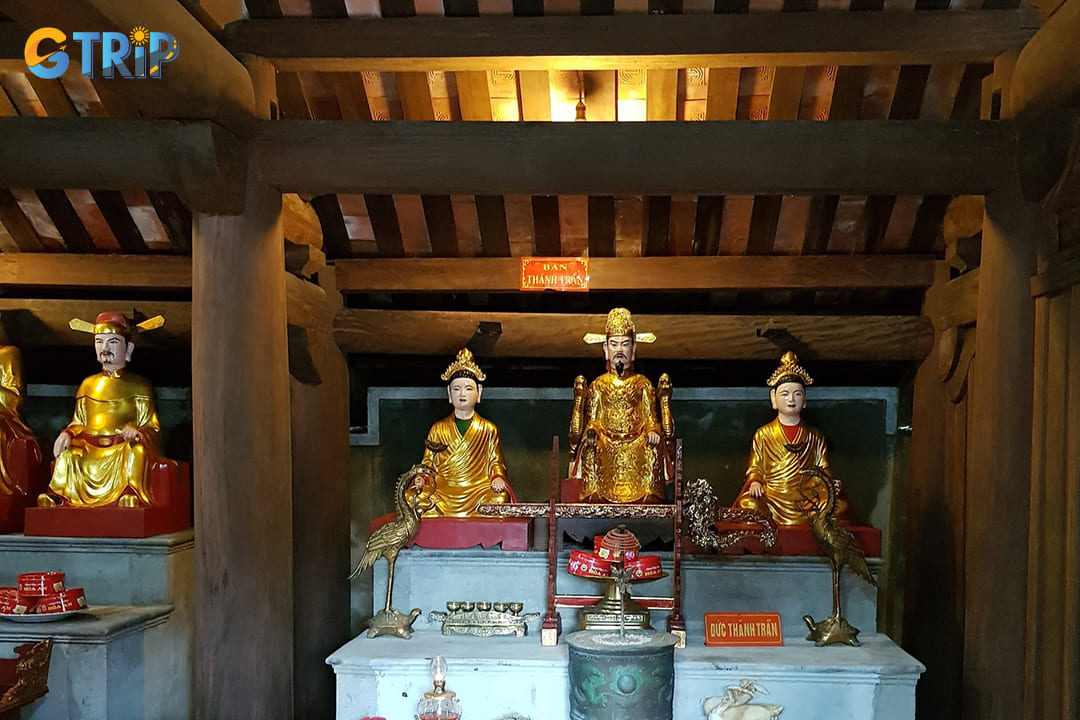
This place is dedicated to the veneration of ancestors who have contributed to the development of Buddhism
Ta Vu - Bell Tower and Huu Vu - Trong Tower
These auxiliary buildings flank the main pagoda and serve distinct functions in the religious and ceremonial practices of Hoa Yen Pagoda. Ta Vu and Huu Vu house important relics, scriptures, and statues, enhancing the spiritual atmosphere of the pagoda. They are also spaces for worship and meditation, offering you a chance to deepen your connection with the divine.
The bell tower, or "Trong Tower", is a key feature of Hoa Yen Pagoda. It holds a large bell used in important rituals and ceremonies. The sound of the bell is believed to carry prayers to the heavens, symbolizing the connection between the earthly and the divine realms. The bell tower's architecture is both functional and symbolic, emphasizing the sacred role of sound in Buddhist practice.
Similarly, the drum tower, located opposite the bell tower, serves as a counterpart in ceremonial functions. The rhythmic beating of the drum signifies the presence of the divine and calls worshippers to prayer. Together, these towers embody the harmony of sound and spirituality that defines Hoa Yen Pagoda.
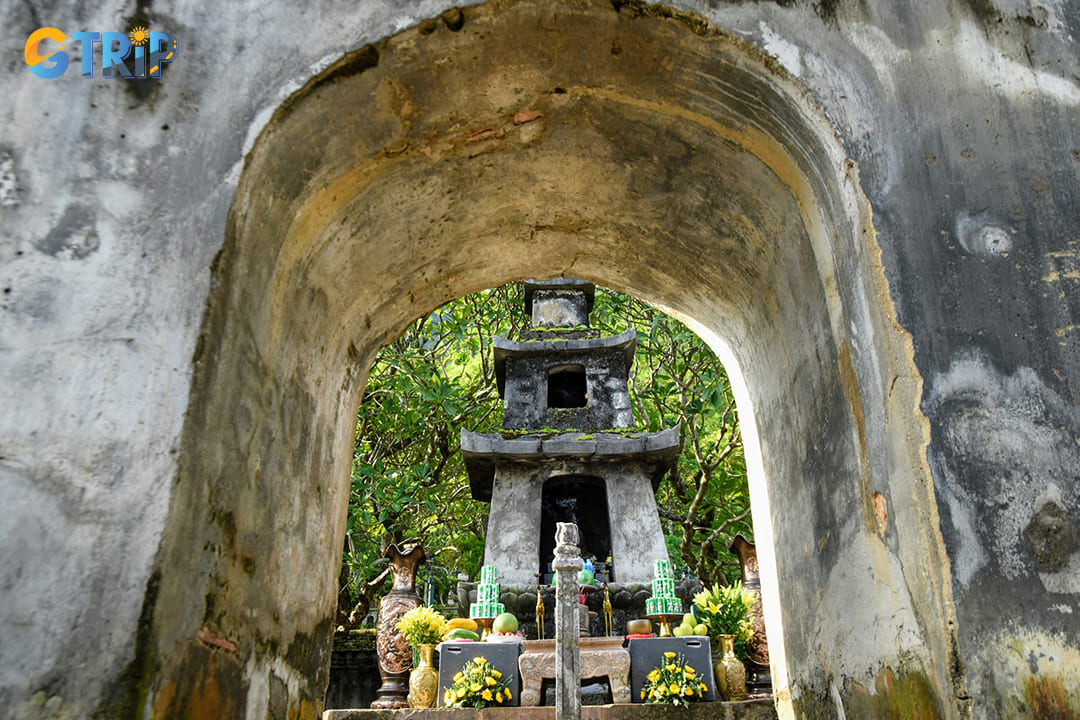
These auxiliary buildings flank the main pagoda and serve distinct functions in the religious and ceremonial practices of Hoa Yen Pagoda
Things to do at Hoa Yen Pagoda
Here are some activities that you can do when visiting Hoa Yen.
1. Attend a Buddhist ceremony
Participating in a Buddhist ceremony at Hoa Yen Pagoda provides a deep and enriching spiritual experience. These ceremonies, often held during major Buddhist holidays like Vesak or the Lunar New Year, include prayers, offerings, and processions. They allow participants to immerse themselves in the rituals and traditions that have been upheld for centuries. The ceremonies at the pagoda also offer an opportunity to connect with local culture and devotion. Monks lead the rituals with chants and prayers that resonate throughout the sacred grounds, creating a serene and inspiring atmosphere. This experience is particularly meaningful for those seeking a deeper understanding of Buddhist practices and Vietnamese spirituality.
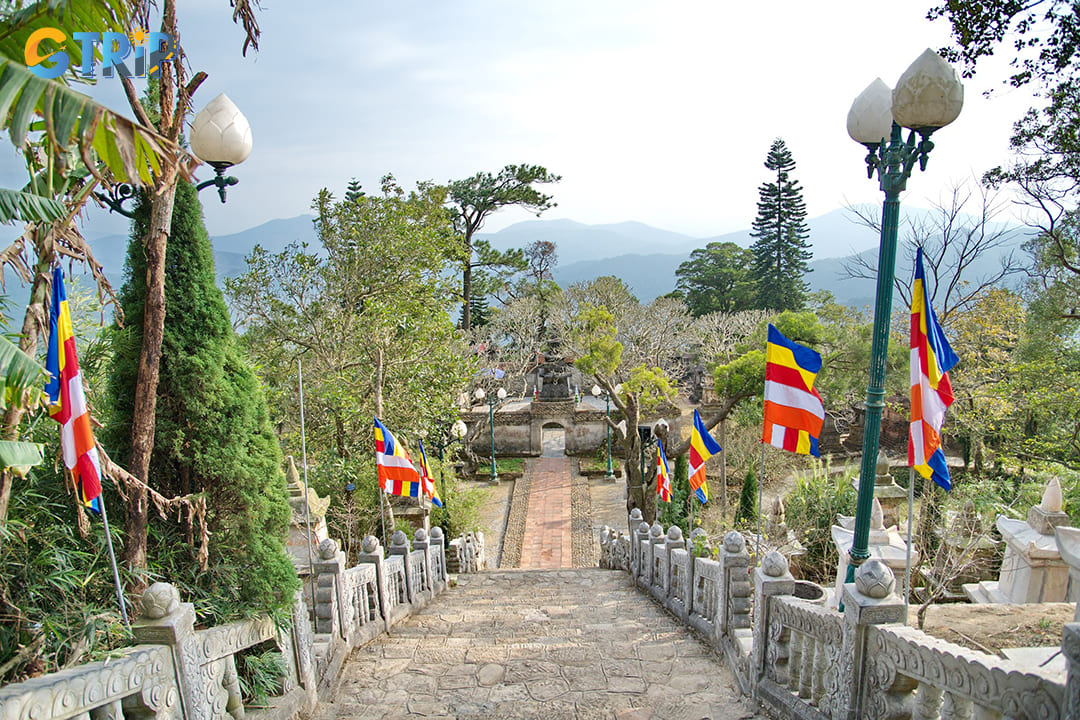
Participating in a Buddhist ceremony at Hoa Yen Pagoda provides a deep and enriching spiritual experience
2. Meditate in the tranquil surroundings
Hoa Yen Pagoda provides a serene environment ideal for meditation and mindfulness practices. Nestled amidst lush greenery and towering mountains, the pagoda’s peaceful surroundings enhance the meditative experience. You can choose quiet spots within the temple grounds or nearby natural areas to focus on their inner peace. Meditation here is not only about personal reflection but also about connecting with the spiritual energy of the place. The calm atmosphere, coupled with the sounds of nature and the distant ringing of the temple bell, creates a perfect setting for mindfulness. Spending time in this environment allows individuals to leave feeling rejuvenated and spiritually uplifted.
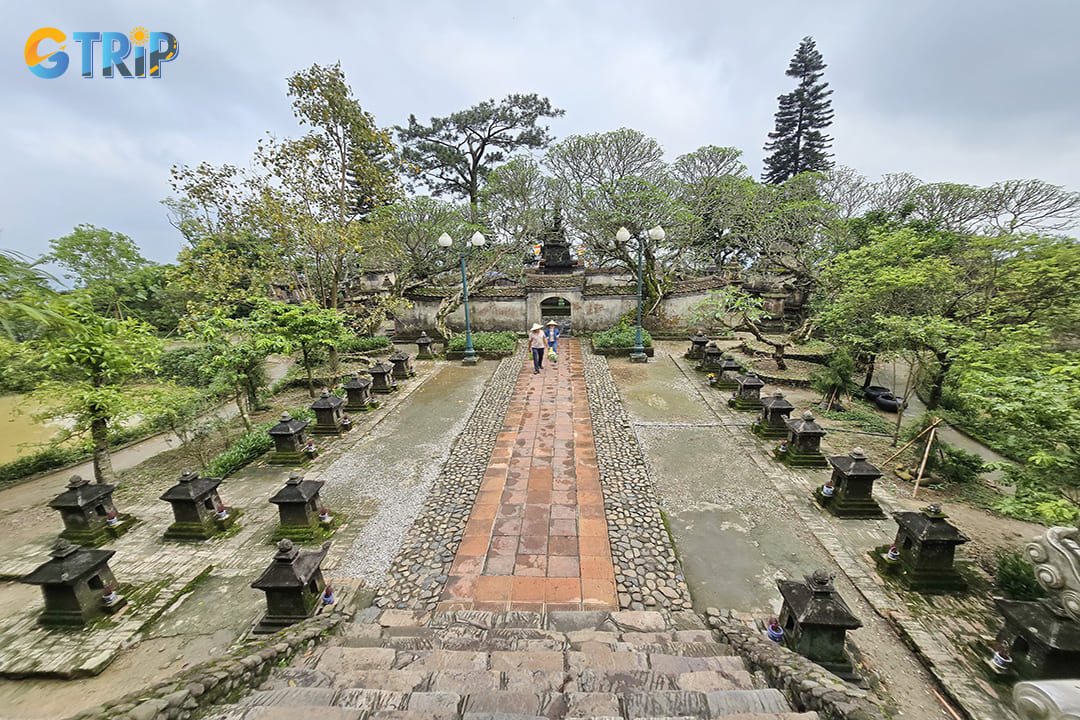
Hoa Yen Pagoda provides a serene environment ideal for meditation and mindfulness practices
3. Participate in traditional rituals
Engaging in traditional Buddhist rituals at Hoa Yen Pagoda provides a unique cultural and spiritual experience. You can observe or participate in practices such as offering incense, chanting, and paying respects to Buddha statues. These rituals are a testament to the enduring traditions of Vietnamese Buddhism. Each ritual is imbued with symbolic meanings, such as purification, gratitude, and devotion. Participating in these activities allows individuals to honor the sacred teachings of Buddhism while gaining insight into local religious customs. This interaction fosters a deeper appreciation of the cultural heritage preserved at Hoa Yen Pagoda.
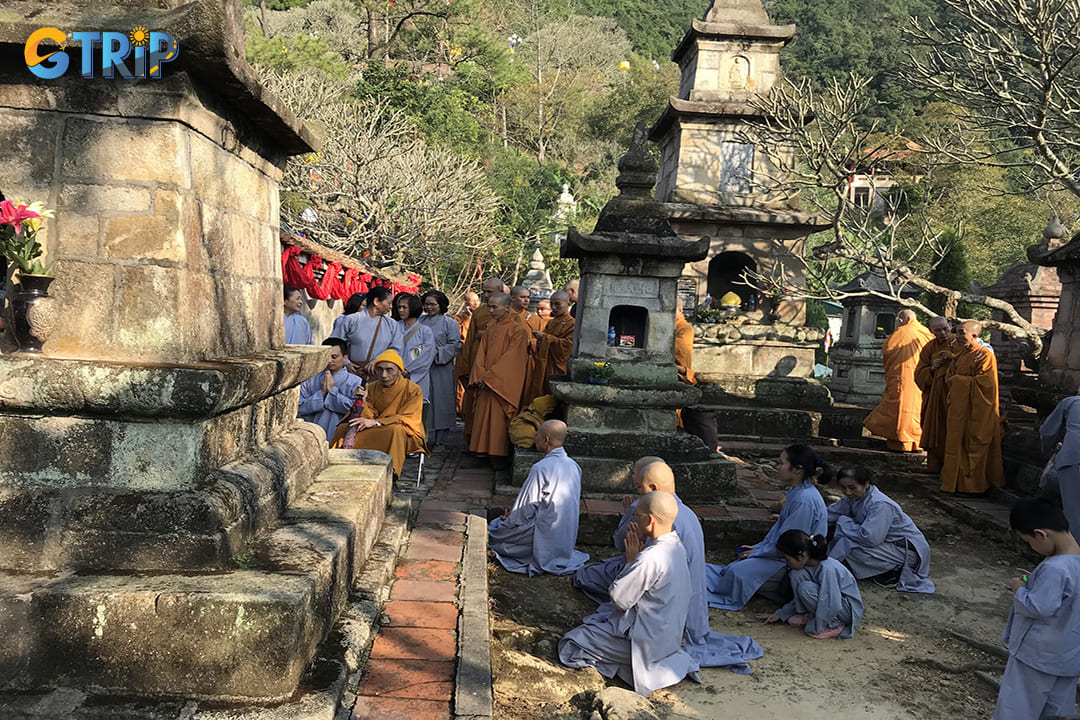
Engaging in traditional Buddhist rituals at Hoa Yen Pagoda provides a unique cultural and spiritual experience
4. Climb to the top of the pagoda for scenic views
The ascent to the top of Hoa Yen Pagoda is a rewarding activity that combines physical effort with breathtaking rewards. The climb involves traversing scenic trails and stone steps that wind through lush forests, offering glimpses of the surrounding natural beauty along the way. Climbing to the top is not just about the views but also about experiencing the sacred journey. Each step serves as a reflection of one’s dedication to spiritual growth, making the entire experience deeply fulfilling and memorable.
Once at the top, you are greeted with panoramic views of the Yen Tu Mountain landscape. The serene vistas of verdant hills and distant horizons provide a moment of tranquility and inspiration. This activity is perfect for photography enthusiasts and nature lovers, offering a chance to capture the beauty of Vietnam’s spiritual heartland. In addition, clearly understanding the best time to visit Hoa Yen Pagoda will help make your experiences more wonderful and more suitable for each person's interests.
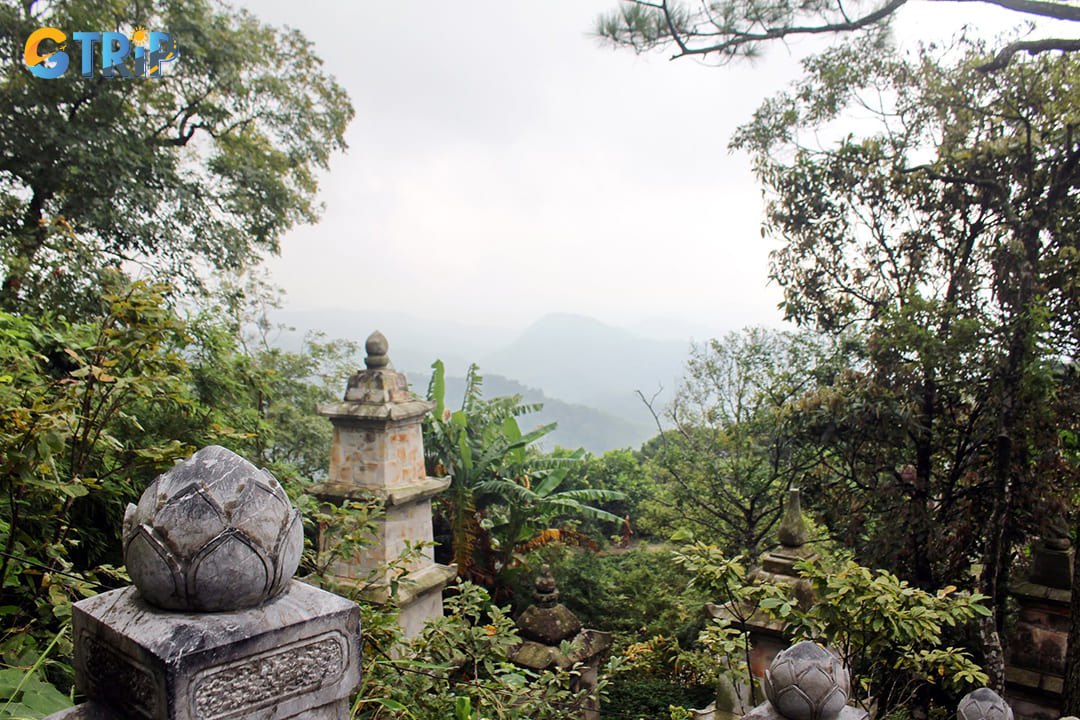
The ascent to the top of Hoa Yen Pagoda is a rewarding activity that combines physical effort with breathtaking rewards
When is the best time to visit Hoa Yen Pagoda?
The best time to visit Hoa Yen Pagoda in Quang Ninh is typically during the dry season, which lasts from November to April. During this period, the weather is cooler and more comfortable for outdoor activities. You can enjoy clear skies and mild temperatures, making it an ideal time for exploring the natural and spiritual beauty of the pagoda.
January to March is especially popular as it coincides with the Tet (Lunar New Year) celebrations and the Yen Tu Spring Festival. These events offer unique opportunities to witness vibrant cultural performances, participate in traditional rituals, and experience the festive atmosphere. Visiting during this time allows travelers to immerse themselves in the rich heritage and spirituality of the region.
For those who prefer a quieter experience, the shoulder months of November and April are recommended. During these periods, the pagoda is less crowded, allowing you to fully appreciate its tranquil ambiance. The natural beauty of Yen Tu Mountain, coupled with the serenity of the pagoda, creates an ideal setting for meditation, reflection, and photography. Tourists should consider the weather when planning their trip, as the rainy season from May to October can make hiking trails slippery and less accessible. Proper preparation and timing ensure a memorable and enjoyable visit to Hoa Yen Pagoda.
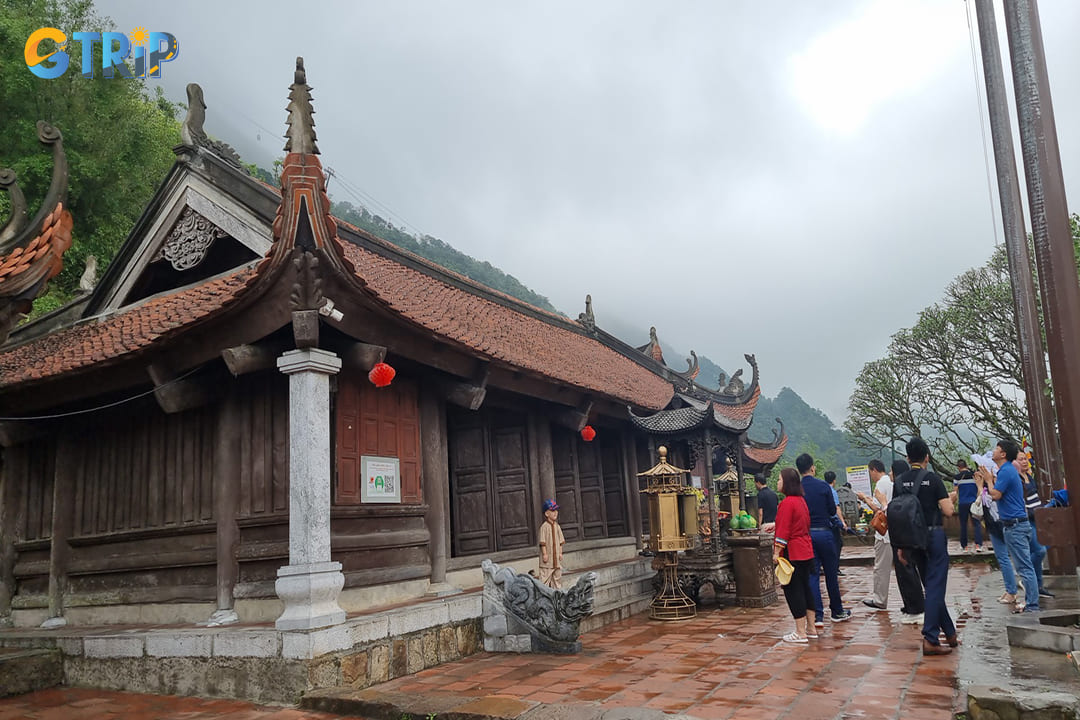
The best time to visit Hoa Yen Pagoda in Quang Ninh is typically during the dry season
How to get to Hoa Yen Pagoda?
You can reach Hoa Yen by many transportation due to your convenience. We list some of them below for your consideration.
1. By private car
Traveling by private car is the most convenient option for reaching Hoa Yen Pagoda. This mode of transportation offers flexibility, allowing travelers to stop at nearby attractions along the way. From Hanoi, take National Highway 1A and follow signs leading to Yen Tu Mountain. The journey typically takes about 3 hours, depending on traffic conditions. Hiring a private car or taxi ensures a comfortable and hassle-free experience. Drivers familiar with the route can provide valuable insights and recommendations for additional sightseeing opportunities in the Quang Ninh region.
2. By bus
For budget-conscious travelers, public buses provide an affordable way to reach Hoa Yen Pagoda. Regular buses operate between Hanoi and Uong Bi City, the gateway to Yen Tu Mountain. From Uong Bi, you can take a taxi or local shuttle to the base of the mountain. Alternatively, tourist bus services often include Hoa Yen Pagoda as part of organized day tours. These tours typically feature guided commentary, making them an excellent choice for those interested in learning more about the history and significance of the site.
3. By motorbike
Adventurous travelers may choose to explore the route to Hoa Yen Pagoda by motorbike. This option offers a sense of freedom and the chance to enjoy scenic drives through Vietnam’s countryside. From Hanoi, follow the main highways and look for signs directing you to Yen Tu Mountain. Motorbike travelers should prioritize safety by wearing helmets and adhering to traffic regulations. Rest stops along the way provide opportunities to relax and appreciate the natural beauty of the journey.
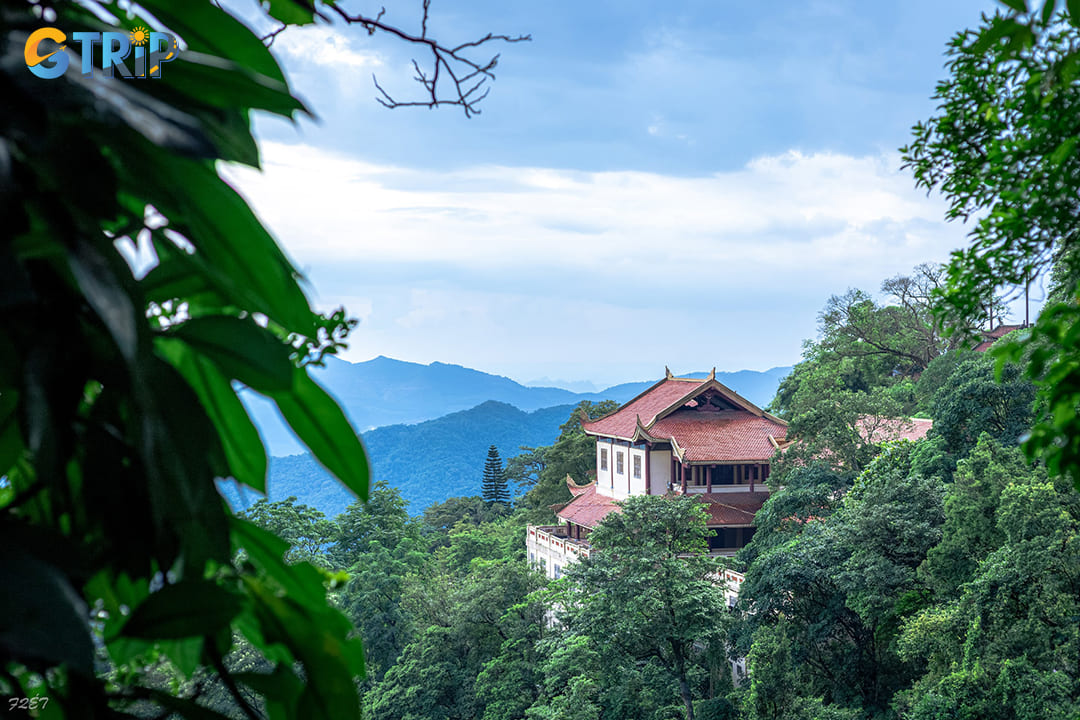
You can reach Hoa Yen Pagoda by car, bus, or motorbike
Important notes when visiting Hoa Yen Pagoda
Traveling to a sacred place like Hoa Yen Pagoda certainly has important notes that tourists should not ignore. Let's find out now!
- Wear suitable clothes: To avoid becoming cold at higher altitudes, you should wear long sleeves and thick clothing
- Avoid using flash photography: Flash photography can disturb the peaceful atmosphere and disrupt worshippers. You should always ask for permission before taking any photos, and be mindful of the environment around you.
- Visit during off-peak times: If you prefer a quieter experience, try to visit during the weekdays or in the morning hours. Weekends and holidays tend to be busier with both tourists and locals.
- Keep the environment clean: Like most sacred sites, Hoa Yen Pagoda encourages tourists to maintain cleanliness. You should dispose of trash in designated bins, and avoid littering the grounds.
- Respect the local etiquette: When visiting temples, it's customary to bow slightly as a sign of respect when entering the temple or offering incense. It's also important to follow the local customs regarding prayer rituals.

